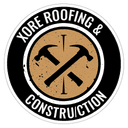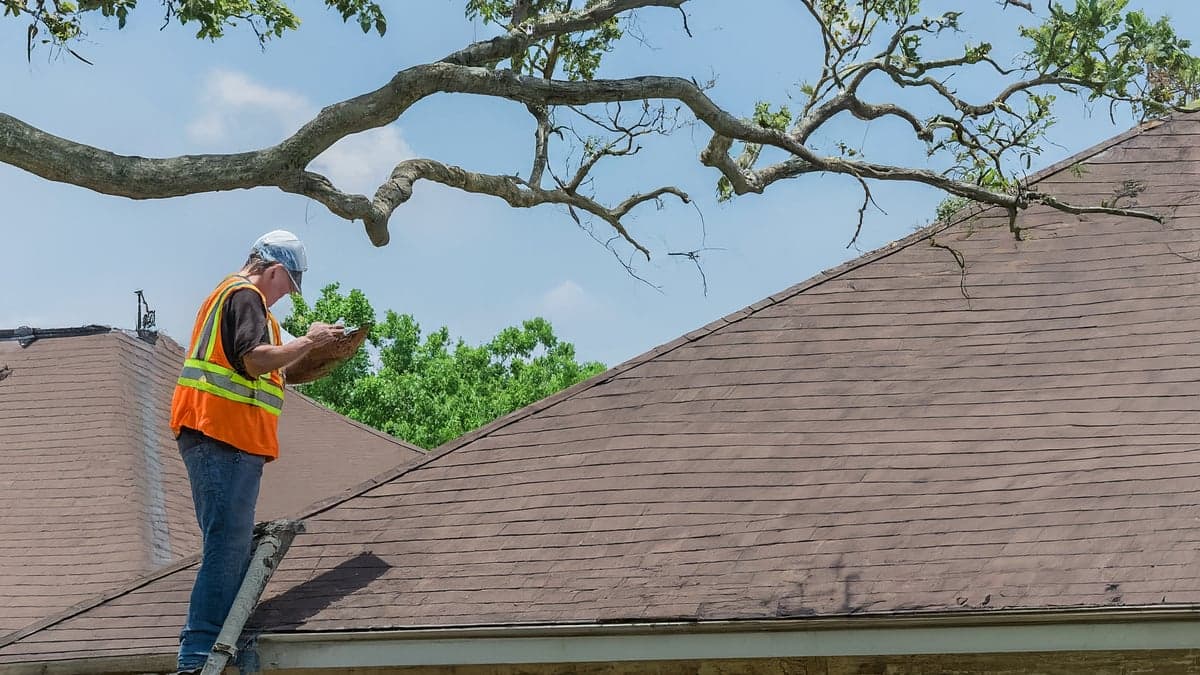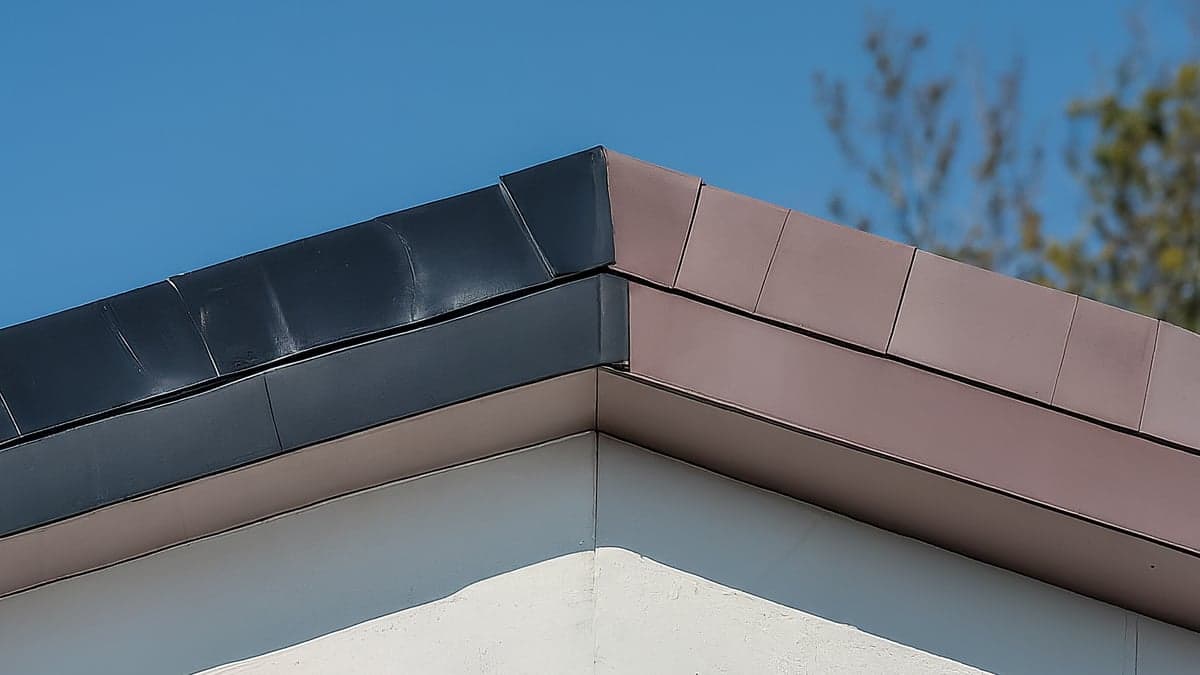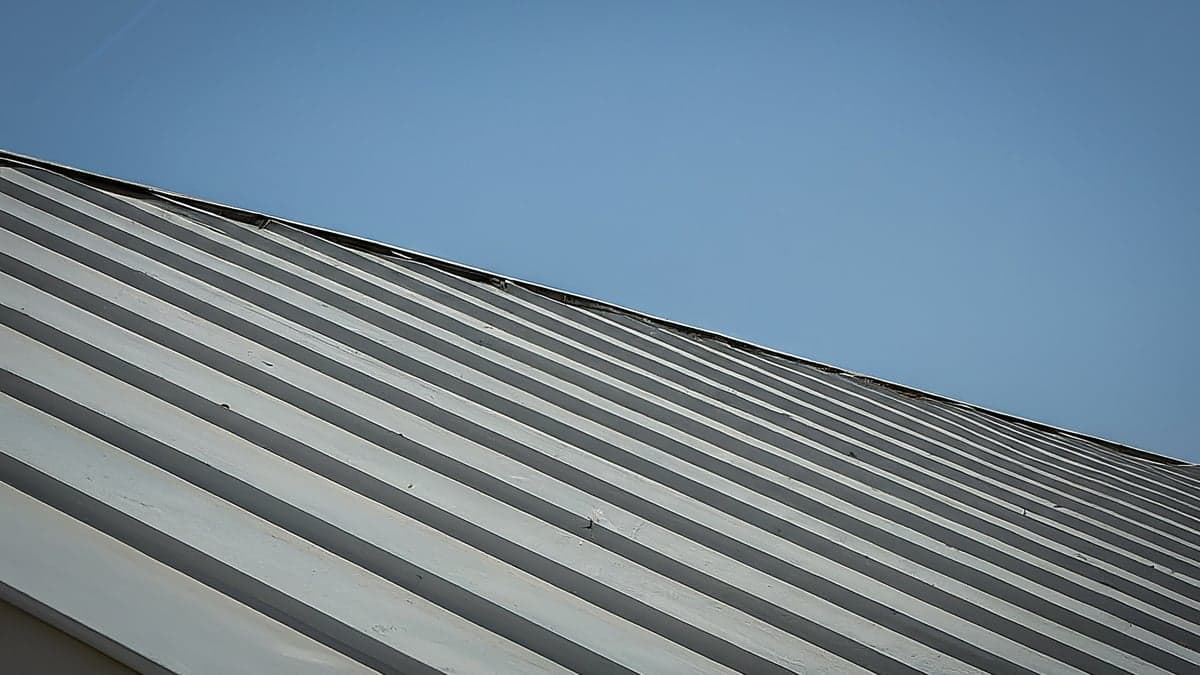Roof Ventilation: Preventing Houston's Summer Attic Heat Damage
Proper roof ventilation prevents attic heat damage in Houston summers. Learn about ventilation systems, energy savings, and installation.
Need Expert Roofing Help?
Free inspections and consultations throughout Houston & Sugar Land
Houston summers are brutal. When outdoor temperatures climb to 95-105°F from June through September, your attic can reach a scorching 150°F or higher without proper ventilation. This extreme heat doesn't just make your home uncomfortable—it damages your roof, strains your HVAC system, and costs you hundreds of dollars in wasted energy every month.
At Xore Roofing, we've installed and repaired ventilation systems across Houston, Sugar Land, Pearland, Katy, Missouri City, and Stafford for over a decade. This comprehensive guide explains why proper roof ventilation is critical in Houston's climate, the types of ventilation systems available, and how to calculate your home's ventilation needs.
Why Attic Ventilation Is Critical in Houston
The Houston Heat Challenge
Temperature Extremes:
- Outdoor summer temperatures: 95-105°F
- Unventilated attic temperatures: 150-170°F
- Well-ventilated attic temperatures: 100-120°F
- Indoor ceiling temperatures affected: 85-95°F (poor ventilation)
The Science: Dark roofing materials absorb intense Texas sun and transfer heat to your attic. Without adequate ventilation to expel this trapped heat, your attic becomes a massive radiator cooking your entire home from above.
What Happens Without Proper Ventilation
1. Roof Structure Damage
Shingle Deterioration:
- Excessive heat bakes shingles from underneath
- Accelerates asphalt breakdown and granule loss
- Causes premature curling, cracking, and warping
- Reduces 25-year shingle lifespan to 12-15 years
- Voids manufacturer warranties
Cost Impact: $8,000-$15,000 premature roof replacement
Roof Deck Damage:
- Wood decking expands and contracts excessively
- Creates nail pops and fastener failures
- Warps and weakens structural integrity
- Increases risk of storm damage
- Requires deck replacement during re-roofing
Cost Impact: Additional $2,000-$4,000 for deck repairs
2. Insulation Destruction
Heat Damage:
- Fiberglass insulation loses R-value above 140°F
- Compressed or damaged insulation ineffective
- Reduces energy efficiency by 30-50%
- Accelerates deterioration and settling
Moisture Damage:
- Trapped heat causes condensation
- Wet insulation loses 50%+ effectiveness
- Creates perfect mold growing conditions
- Requires complete replacement
Cost Impact: $1,500-$3,500 insulation replacement
3. HVAC System Strain
Excessive Runtime:
- Air conditioner works 30-40% harder
- Compressor runs continuously
- Unable to maintain desired temperature
- Increased wear on all components
- Shortened equipment lifespan (from 15 years to 8-10 years)
Energy Waste:
- Cooling costs increase $150-300/month
- Peak demand charges higher
- System capacity inadequate
- Inefficient operation cycle
Cost Impact: $1,800-$3,600 annually in excess cooling costs
4. Interior Comfort Problems
Temperature Issues:
- Second floor rooms 5-10°F warmer
- Ceiling feels hot to touch
- Air conditioner runs constantly but can't cool effectively
- Hot spots in certain rooms
- Uncomfortable sleeping conditions
Quality of Life:
- Reduced home comfort
- Higher utility stress
- Increased AC maintenance calls
- Family complaints about heat
5. Moisture and Mold Problems
Houston's Humidity Factor:
- Year-round 60-75% average humidity
- Warm attic + humid air = condensation
- Moisture accumulates on cold surfaces (winter)
- Perfect conditions for mold growth
- Wood rot and structural decay
Health Concerns:
- Mold spores circulate through home
- Respiratory issues and allergies
- Musty odors throughout house
- Health hazard to occupants
Cost Impact: $3,000-$10,000 mold remediation
6. Ice Damming (Yes, Even in Houston)
While rare, Houston does experience freezing temperatures:
- Poor ventilation creates warm attic
- Melts frost on roof surface
- Refreezes at eaves creating ice buildup
- Water backs up under shingles
- Interior leaks and damage
Types of Roof Ventilation Systems
Proper ventilation requires balanced intake and exhaust. Houston Building Code requires 1 square foot of ventilation per 150 square feet of attic space (with vapor barrier), split 50/50 between intake and exhaust.
Intake Ventilation (Bottom of Roof)
1. Soffit Vents
How They Work:
- Installed in eaves/overhangs
- Allow cool air to enter attic
- Most common intake method
- Work with exhaust vents to create airflow
Types:
- Continuous soffit vents: Best performance, runs entire length
- Individual soffit vents: Spaced along soffit, less efficient
- Circular vents: Retrofitted into existing soffits
Pros:
- Discrete and invisible from ground
- Effective when properly installed
- Low cost ($2-5 per linear foot)
- Minimal maintenance required
- Works with any exhaust system
Cons:
- Can be blocked by insulation
- Requires adequate soffit width (12+ inches ideal)
- Insects/pests can enter (screen required)
- May not work with enclosed eaves
Cost: $500-$1,500 installation (typical Houston home)
2. Drip Edge Vents
How They Work:
- Installed at roof edge under first shingle course
- Provides intake when soffit vents impossible
- Alternative for homes without overhangs
Pros:
- Works without soffits
- Clean appearance
- Good for modern designs
Cons:
- More expensive than soffit vents
- More complex installation
- Requires compatible roofing system
Cost: $800-$2,000 installation
Exhaust Ventilation (Top of Roof)
1. Ridge Vents (MOST RECOMMENDED)
How They Work:
- Runs along entire roof peak
- Allows hot air to escape naturally
- Creates continuous exhaust channel
- Works with natural convection (hot air rises)
Types:
- Rigid ridge vents: Sturdy, long-lasting
- Flexible ridge vents: Conforms to roof irregularities
- Filtered ridge vents: Includes mesh screen
Pros:
- Most effective exhaust system
- Nearly invisible from ground
- No moving parts to fail
- Even ventilation across entire roof
- Works with all intake systems
- Quieter than power vents
- No electricity required
Cons:
- Requires roof peak modification
- Most expensive passive option
- Professional installation required
- Can leak if improperly installed
Cost: $3-$5 per linear foot = $900-$2,500 (typical Houston home)
Performance: Ventilates up to 300 square feet per linear foot
2. Box Vents (Static Vents)
How They Work:
- Individual units installed on roof surface
- Allow hot air to escape through openings
- Rely on natural convection and wind
Pros:
- Lower cost than ridge vents
- Easy to install
- No electricity required
- Can be added to existing roofs
- Good for complex roof designs
Cons:
- Less efficient than ridge vents
- Visible from ground
- Multiple units required for adequate ventilation
- Potential leak points
- Wind-direction dependent
Cost: $25-$75 per vent installed = $300-$1,200 (8-16 vents typical)
Performance: Ventilates 50-75 square feet per vent
3. Turbine Vents (Whirlybirds)
How They Work:
- Wind spins turbine
- Creates suction pulling hot air out
- Mechanical advantage over static vents
Pros:
- More effective than box vents
- No electricity required
- Increased ventilation on windy days
- Relatively affordable
Cons:
- Moving parts wear out (bearings fail)
- Noisy when bearings deteriorate
- Visible and can look dated
- Less effective in calm conditions
- Requires maintenance
Cost: $50-$150 per unit installed = $400-$900 (3-6 units typical)
Performance: Ventilates 100-150 square feet per unit (when spinning)
4. Power Attic Ventilators (Electric Fans)
How They Work:
- Electrically powered fan
- Thermostat controlled (activates at set temperature)
- Forces hot air out mechanically
- Most powerful exhaust option
Types:
- Hardwired electric: Connected to home electrical
- Solar powered: Independent solar panel
- Gable mount: Installed in gable end
- Roof mount: Installed on roof surface
Pros:
- Most powerful ventilation
- Rapid heat removal
- Adjustable temperature settings
- Solar option uses no grid electricity
- Effective for severely hot attics
Cons:
- Higher initial cost
- Requires electricity (except solar)
- Moving parts wear out
- Can create negative pressure (pulling conditioned air from home)
- Potential electrical issues
- Maintenance required
- Can be noisy
Cost:
- Electric: $400-$800 installed (plus $10-25/month electricity)
- Solar: $600-$1,500 installed (no operating cost)
Performance: Ventilates 500-1,200 square feet per fan
Houston Consideration: Solar-powered fans make sense given abundant sunshine, but ensure proper intake ventilation to prevent negative pressure issues.
5. Gable Vents
How They Work:
- Installed in gable ends (triangular wall sections)
- Allow cross-ventilation through attic
- Often decorative element
Pros:
- Attractive architectural feature
- Simple installation in new construction
- No roof penetrations
- Provides both intake and exhaust
Cons:
- Only works with gable roof designs
- Less effective than ridge vents
- May create dead air zones
- Wind direction dependent
Cost: $50-$200 per vent installed
Performance: Ventilates 100-300 square feet per vent (wind dependent)
Calculating Your Ventilation Needs
Step 1: Calculate Attic Square Footage
For simple attic spaces:
Attic Area = Home Length × Home Width
Example: 40-foot × 30-foot home = 1,200 sq ft attic
For complex roofs, measure each section separately and add together.
Step 2: Calculate Required Ventilation
Texas Building Code Formula:
- Without vapor barrier: 1 sq ft ventilation per 150 sq ft attic
- With vapor barrier: 1 sq ft ventilation per 300 sq ft attic
Most modern Houston homes have vapor barriers, so:
Required Ventilation = Attic Area ÷ 300
Example: 1,200 sq ft ÷ 300 = 4 sq ft total ventilation
Step 3: Split Between Intake and Exhaust
Intake Ventilation = Total ÷ 2
Exhaust Ventilation = Total ÷ 2
Example: 4 sq ft total = 2 sq ft intake + 2 sq ft exhaust
Step 4: Select Ventilation Products
Intake Example (Soffit Vents):
- Continuous soffit vent: 9 sq inches per linear foot
- Convert to sq ft: 9 ÷ 144 = 0.0625 sq ft/linear foot
- Required length: 2 sq ft ÷ 0.0625 = 32 linear feet
Exhaust Example (Ridge Vent):
- Ridge vent: 18 sq inches per linear foot
- Convert to sq ft: 18 ÷ 144 = 0.125 sq ft/linear foot
- Required length: 2 sq ft ÷ 0.125 = 16 linear feet
Alternative Exhaust (Box Vents):
- Box vent: 50 sq inches each = 0.347 sq ft
- Required vents: 2 sq ft ÷ 0.347 = 6 vents
Energy Savings from Proper Ventilation
Cooling Cost Reduction
Houston Climate Data:
- Cooling degree days: 3,000+ annually
- Air conditioning season: March through October (8 months)
- Peak usage: June through September
Energy Impact Calculations:
Poorly Ventilated Attic:
- Attic temperature: 150°F
- Ceiling temperature: 90°F
- Heat transfer to home: Very high
- AC runtime: 80-90% of day
- Monthly cooling cost: $300-$450
Well-Ventilated Attic:
- Attic temperature: 110°F
- Ceiling temperature: 80°F
- Heat transfer to home: Moderate
- AC runtime: 50-60% of day
- Monthly cooling cost: $180-$250
Monthly Savings: $120-$200
Annual Savings: $960-$1,600
10-Year Savings: $9,600-$16,000
HVAC Lifespan Extension
Without Proper Ventilation:
- HVAC lifespan: 8-10 years
- Replacement cost: $6,000-$12,000
- Increased repair calls
- More frequent maintenance
With Proper Ventilation:
- HVAC lifespan: 15-20 years
- Extended replacement timeline
- Fewer repairs needed
- Lower maintenance costs
Value: $6,000-$12,000 delayed replacement + $500-$1,000 reduced repairs
Roof Lifespan Extension
Without Proper Ventilation:
- Shingle lifespan: 12-15 years
- Premature replacement: $10,000-$18,000
- More frequent repairs
With Proper Ventilation:
- Shingle lifespan: 20-30 years (full warranty period)
- Expected replacement timeline
- Fewer repairs
Value: 5-10 additional years = $10,000-$18,000 delayed replacement
Total 10-Year Value
Energy savings: $9,600-$16,000
HVAC protection: $6,000-$12,000
Roof protection: $5,000-$10,000
Mold prevention: $3,000-$10,000
Total Value: $23,600-$48,000
Signs of Poor Ventilation
Summer Indicators
Hot Second Floor:
- Upstairs 5-10°F warmer than downstairs
- Ceiling feels hot to touch
- Rooms above garage especially hot
- AC struggles to cool upper level
AC Issues:
- System runs continuously
- Never reaches set temperature
- Short cycling (frequent on/off)
- High utility bills
Attic Conditions:
- Temperature exceeds 130°F
- Feels like an oven when entering
- Hot air doesn't move
- Stagnant, oppressive heat
Year-Round Indicators
Moisture Problems:
- Condensation on windows
- Musty attic odor
- Mold growth on attic surfaces
- Wet or compressed insulation
- Water stains on ceiling
Structural Issues:
- Warped or sagging roof deck
- Nail pops in ceiling
- Cracked or curled shingles
- Rusted nails or metal components
- Peeling paint on soffits/fascia
Ventilation Blockages:
- Insulation blocking soffit vents
- Covered gable vents
- Non-functional ridge vents
- Clogged vent screens
Ventilation Installation Costs & ROI
Installation Cost Breakdown
Basic Ventilation Upgrade (1,800 sq ft home):
- Soffit vent installation: $800-$1,200
- Ridge vent installation: $1,200-$2,000
- Attic insulation adjustment: $300-$600
- Total: $2,300-$3,800
Mid-Range Upgrade (2,500 sq ft home):
- Continuous soffit vents: $1,200-$1,800
- Ridge vent with new ridge cap: $1,800-$2,800
- Box vents or turbines (supplemental): $400-$800
- Insulation baffles: $400-$700
- Total: $3,800-$6,100
Premium System (3,500+ sq ft home):
- Complete soffit ventilation: $1,800-$2,500
- Ridge vent system: $2,500-$3,500
- Solar attic fan: $800-$1,500
- Insulation upgrade: $2,000-$3,500
- Total: $7,100-$11,000
Included During Roof Replacement:
Adding proper ventilation during re-roofing adds:
- Ridge vent upgrade: $500-$1,000 additional
- Soffit vent upgrade: $600-$1,200 additional
- Best time to upgrade (labor already on site)
Return on Investment
Example: $4,000 Ventilation Upgrade
Annual Savings:
- Energy costs: $1,200
- HVAC maintenance: $200
- Total annual benefit: $1,400
Simple Payback Period: 2.9 years
Long-Term Value (20 years):
- Energy savings: $24,000
- Extended HVAC life: $8,000
- Extended roof life: $12,000
- Total value: $44,000
ROI: 1,000% over 20 years
Financing Options
Xore Roofing offers:
- 0% financing for 12-18 months (qualified applicants)
- Low monthly payments for longer terms
- Combined with re-roofing projects
- Energy efficiency rebates (check local utility programs)
Example Payment:
$4,000 project ÷ 12 months = $333/month
(Offset by $100/month energy savings = $233 net cost)
DIY vs. Professional Installation
When DIY Might Work
Simple Projects:
- Installing gable vent in existing opening
- Replacing individual soffit vents
- Adding attic insulation baffles
- Installing turbine vent in prepared opening
Requirements:
- Comfortable working on roof
- Proper safety equipment
- Basic carpentry skills
- Understanding of ventilation principles
Potential Savings: $500-$1,500 in labor
When Professional Installation Required
Complex Projects:
- Ridge vent installation (requires cutting roof peak)
- Soffit vent system installation
- Roof surface penetrations
- Electrical work (power attic fans)
- Balanced system design
- New construction or whole-house projects
Why Professional Matters:
Proper Design:
- Calculate exact ventilation requirements
- Balance intake and exhaust
- Prevent negative pressure
- Ensure code compliance
Quality Installation:
- No roof leaks
- Proper flashing and sealing
- Structural integrity maintained
- Manufacturer warranty compliance
Safety:
- Professional equipment
- Insurance coverage
- OSHA-compliant procedures
- No homeowner injury risk
Code Compliance:
- Houston building permit
- City inspection pass
- Insurance requirements met
- HOA approval (if required)
Typical Issues with DIY:
- Imbalanced intake/exhaust (creates problems)
- Roof leaks from improper installation
- Voided roof warranty
- Failed inspections
- Safety injuries
Building Code Requirements
Houston/Harris County Requirements
Ventilation Ratio:
- 1:150 ratio (1 sq ft per 150 sq ft attic) without vapor barrier
- 1:300 ratio (1 sq ft per 300 sq ft attic) with vapor barrier
- 50/50 balance between intake and exhaust
Vent Placement:
- Intake vents: Lower roof area (soffits, eaves)
- Exhaust vents: Upper roof area (ridge, near peak)
- Minimum 3 feet separation vertically
Screening:
- All vents must have 1/4-inch to 1/2-inch mesh screening
- Prevents pest intrusion
- Must not reduce vent area by more than 50%
Fort Bend County Requirements
Similar to Harris County with additional considerations:
- HOA architectural approval often required
- Deed restriction compliance
- Historical district guidelines (certain neighborhoods)
Permit Requirements
When Permit Required:
- New construction
- Major ventilation system addition
- Roof replacement with ventilation changes
- Electrical work (power attic fans)
When Permit May Not Be Required:
- Like-for-like vent replacement
- Minor repairs
- (Check with local building department)
Xore Roofing handles:
- All permit applications
- Building department coordination
- Inspection scheduling
- Final approval documentation
Maintenance and Monitoring
Annual Inspection Checklist
Spring (Before Summer Heat):
- Check all vents for blockages
- Clean soffit vents
- Verify ridge vent clear
- Test power fans (if applicable)
- Inspect attic for moisture
Fall (Before Winter):
- Remove debris from vents
- Check for pest intrusion
- Verify insulation not blocking vents
- Test system before heating season
After Major Storms:
- Inspect for wind damage
- Check for debris blocking vents
- Verify power fan operation
- Look for water intrusion
Maintenance Requirements
Soffit Vents:
- Clean debris annually
- Check for paint blockage
- Verify screening intact
- Ensure insulation not blocking
Ridge Vents:
- Inspect for damage after storms
- Verify cap shingles secure
- Check for wasp nests
- Ensure continuous airflow
Power Attic Fans:
- Test operation monthly
- Clean fan blades annually
- Verify thermostat function
- Check electrical connections
- Replace worn bearings
Turbine Vents:
- Lubricate bearings annually
- Check for free spinning
- Tighten mounting hardware
- Replace if noisy or stuck
Performance Monitoring
Check Attic Temperature:
- On hot day (95°F+), measure attic temp
- Should be within 20-30°F of outside temp
- If 40°F+ hotter, ventilation inadequate
Monitor Energy Bills:
- Compare year-over-year cooling costs
- Look for unexplained increases
- Track AC runtime percentage
Assess Home Comfort:
- Second floor temperature consistency
- Ceiling warmth to touch
- Overall cooling effectiveness
Common Ventilation Mistakes to Avoid
1. Imbalanced System
- Too much exhaust, not enough intake
- Creates negative pressure
- Pulls conditioned air from living space
- Reduces efficiency
Solution: Balance 50/50 intake to exhaust
2. Mixing Exhaust Types
- Ridge vent + gable vents = short-circuiting
- Power fan + ridge vent = wasted ridge vent
- Multiple exhaust types compete
Solution: Use one primary exhaust type
3. Blocked Intake Vents
- Insulation covering soffit vents
- Most common problem in Houston attics
- Prevents air circulation
Solution: Install insulation baffles, maintain clear path
4. Insufficient Ventilation
- Using calculation as maximum instead of minimum
- Houston's extreme heat requires meeting or exceeding code
- Skimping costs more long-term
Solution: Meet or exceed 1:300 ratio
5. Poor Quality Installation
- Improperly sealed penetrations
- Incorrect flashing
- Leads to leaks
Solution: Hire experienced professionals like Xore Roofing
Take Action Now
Houston's brutal summer heat is hard on homes, but proper roof ventilation protects your investment and saves you money every month. Whether you're experiencing comfort issues, high energy bills, or planning ahead, addressing ventilation now prevents costly damage later.
Free Ventilation Assessment
Xore Roofing provides:
- Complete attic and roof inspection
- Temperature measurements and analysis
- Ventilation calculation for your specific home
- Detailed recommendations with options
- Written estimate for improvements
- No obligation, no pressure
Schedule Today: (832) 499-4585
Why Choose Xore Roofing
Local Expertise:
- Houston specialists since 2010
- Understand Gulf Coast climate challenges
- 1,000+ ventilation systems installed
- Harris, Fort Bend, and Brazoria Counties
Quality Installation:
- Licensed and insured
- Building code compliant
- Manufacturer certifications
- Workmanship warranty
- Leak-free guarantee
Complete Service:
- Free assessment and design
- Permit handling
- HOA coordination
- Professional installation
- Post-installation inspection
Service Areas:
Houston, Sugar Land, Pearland, Katy, Missouri City, Stafford, and all surrounding areas in Harris, Fort Bend, and Brazoria Counties.
Contact Xore Roofing
Phone: (832) 499-4585
Text: Same number for quick response
Email: info@xoreroofing.com
Online: xoreroofing.com/contact
Office Hours: Monday-Saturday, 7am-7pm
Emergency Service: 24/7 available
Don't let Houston's summer heat damage your home. Proper roof ventilation is one of the smartest investments you can make—protecting your roof, extending your HVAC life, and saving money every month.
Call Xore Roofing today for your free ventilation assessment: (832) 499-4585
Related Services:
- Roof Inspection - Comprehensive assessment
- Roof Repair - All damage types
- Roof Replacement - Complete installations
- Energy Efficiency - Cool roof solutions
Related Topics:
About Xore Roofing Team
Expert roofing professionals serving Houston, Sugar Land, and Fort Bend County since 2010. Specializing in residential and commercial roofing with a focus on quality, customer service, and long-term relationships.



